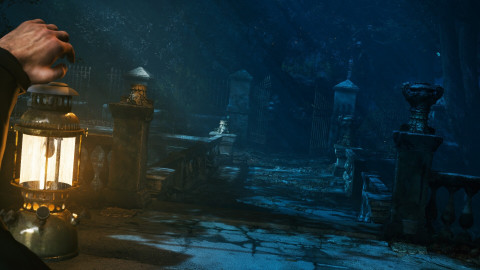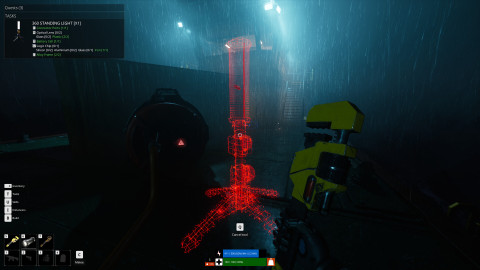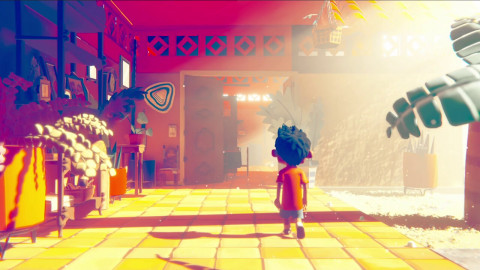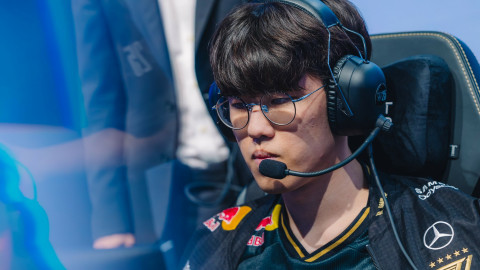
Disclaimer : The following article was written freely based on the author's opinion, and it may not necessarily represent Inven Global's editorial stance.
Over the weekend, I returned to Overwatch after having not played the game for several months. There hadn’t been any catalyst or negative event that stopped me from playing – I just felt like it had been time to move on and experience not just what other multiplayer shooters had to offer, but other genres, as well. My decision to pick the game back up was sparked by the “Summer Games” and specifically the return of Lúcioball, but I quickly got back into the flow of standard competitive matches. I still felt right at home with Hanzo, even though my bow aim was a little bit off, and newcomers Orisa and Doomfist made the game feel different, but not entirely unfamiliar.
Much of my love of Overwatch comes from its excellent moment-to-moment gameplay and laid back approach to competitive multiplayer (at least on the PlayStation 4) but a large part of it, as odd as it sounds, is also rooted in nostalgia. Yes, the game is only a year old and I’m not a radically different person now, but when I enter a match on King’s Row or Hollywood, it reminds me of the absolute craze that the game caused in the weeks and even months after its initial release. It seemed to be the only game anyone talked about, and though all games have their vocal detractors, most of us were more than willing to stop bickering for a little while and just enjoy the magic that Blizzard had created. That time has since passed, but I still feel a slight rush when I start a match.

Those warm, fuzzy feelings even occasionally return when I’m playing a terrible game. The Pokémon Go frenzy last summer was driven not by the game’s quality – because it’s an objectively awful piece of software – but by the prospect of being able to finally catch Pokémon in the real world. We ventured out with our friends, running down streets together and exploring parks while we met fellow trainers. Though the experience was plagued by technical difficulties more often than not, I made great memories just by exploring my town, and when I open the Pokémon Go app and browse through my collection, those memories come back.
Of course, these nostalgic feelings only grow stronger when I’m playing a good game, and particularly when it’s a title from early in my childhood. Twenty years ago, I first picked up a video game controller with my older brother and played, or attempted to play, games like Super Mario World, Super Mario Kart, and Star Fox 64. I had little to no skill and couldn’t make it more than a few levels into any of them, but the characters, gameplay style, and the music still stuck with me – I was introduced to a medium that was central to my development as a person and my love for creativity, and the memories of sitting with my brother and exploring the Mushroom Kingdom still come back whenever I load up the games again.

Like few other companies, Nintendo has managed to capitalize on players’ nostalgia in a way that not only feels genuine but also opens up the door for new generations of fans. The Legend of Zelda: Ocarina of Time launched in 1998 and, for the time, was a beautiful game. Its detailed environments and expressive characters were among the best in gaming, but if you were to return to the Nintendo 64 game today, you’d notice the rough edges. “Textures” on walls are just painted on and famous characters like Link and Ganondorf have blocky features that are somewhat distracting in 2017.
Our mind has a way of making us think earlier video games were more visually impressive than they actually were, and Nintendo’s solution to this was to create a version of the game closer to what we “remembered.” On the 3DS version of Ocarina of Time, Link’s face is round, environments have greater detail, and motion controls are even implemented to compensate for the original’s somewhat sloppy bow and slingshot aiming. Star Fox 64 3D fared even better, with explosion effects and spaceship models transforming the game into something today’s kids can respect – certainly more so than recent attempts at Star Fox titles. With the visual boost and modernized control scheme, there’s significantly less getting in the way between you and your memories of the past.

Unfortunately, your mind is just as willing, if not more willing, to recall bad memories as it is the good ones, and video games are just as capable of bringing those back, as well. For me, they have almost nothing to do with the games themselves, but rather my mental state when they were released. When Halo 3 released 10 years ago, I was 13 years old. Just about ready to head into high school, I found myself struggling with severe depression that has subsequently plagued me off-and-on for the last decade. I love Halo 3 and have replayed it since then, but the thoughts still race back into my mind. I think about how little has seemed to change in my life since the game came out, and how I’ve wasted years just waiting for the new entry in my favorite series to come out.
Deep down, I know that none of that is true. I’ve grown as a person, and video games were a catalyst for much of that growth. Nearly every friendship I’ve ever had has started with a conversation about video games. Some of my happiest nights were spent sitting on the couch and playing them, whether is was with a group of people or by myself. My interest in politics, music, and film can be tied to video games. Without them, it’s possible I wouldn’t be reminded of the darker moments in my life, but no one’s life is perfect. You have to take the good with the bad, and returning to my favorites every so often allows me to put it all in perspective. It’s too late to change the past, but it’s never too late to reflect on it.

Sort by:
Comments :0






